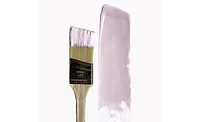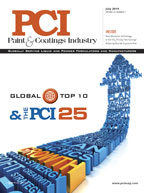Pantone Picks 2022 Color of the Year, U.K. Paint Manufacturer Responds

TONBRIDGE, England – PANTONE announced Very Peri as its chosen color of the year for 2022, giving YesColours a head start with its color combinations. YesColours, the designer paint brand that launched a fully recyclable packaging alternative that aims to cut consumer waste and stop tricky-to-recycle leftover paint tins going to landfill, has four purples and lilacs in its unique color palette, aligning with the upcoming trend for 2022. Lilac looks to be the color set to replace the dusty and muted tones of 2021, adding some much needed freshness and life to the interior decor market.
YesColours is introducing colors that are focused on customers’ wellbeing. The company has mindfully curated its color palette into collections that are purposefully simple, naming groups and colors based on the feelings they evoke. The YesColours palette consists of four rich, vibrant lilac hues: Passionate Lilac — a deep, intuitive color with red energy and cooling blue; Joyful Lilac — a magenta blue; Friendly Lilac — the sweet lavender parma-violet; and Fresh Lilac — suggesting the tranquility of amethyst stones and springtime hyacinths.
YesColours, founded by John Stubbs (NewTerritory, Mary Portas), and Creative Partner Emma Bestley (Moveovermagnolia, ClearChannel) in 2020, looks to tackle the U.K. waste paint issue head-on by introducing new packaging that aims to remove the traditional paint cans in favor of fully recyclable pouches, which are more commonly used for food and cosmetic products. According to the company, only one-third of household waste recycling centers (HWRCs) accept paint and cans for recycling, and only 2% of accepted paint waste gets recycled, with 98% going to landfill or incineration. In the U.K., the national average is 17 leftover paint cans per household. YesColours paints come in one-liter sizes, which help to avoid over-ordering at the point of purchase — one of the main reasons for the waste generated in the U.K.
YesColours' paint pouch packaging alone uses 16% less fossil fuel, generates 21% less greenhouse gas emissions and uses 26% less water throughout its production than traditional rigid packaging — giving consumers the opportunity to help the environment before they’ve even started painting. The packaging can be placed in local store or supermarket recycling points — far better than leaving cans to degrade over time. As U.K. collection services improve curbside recycling, customers will be able to recycle in their homes as well.
Looking for a reprint of this article?
From high-res PDFs to custom plaques, order your copy today!









